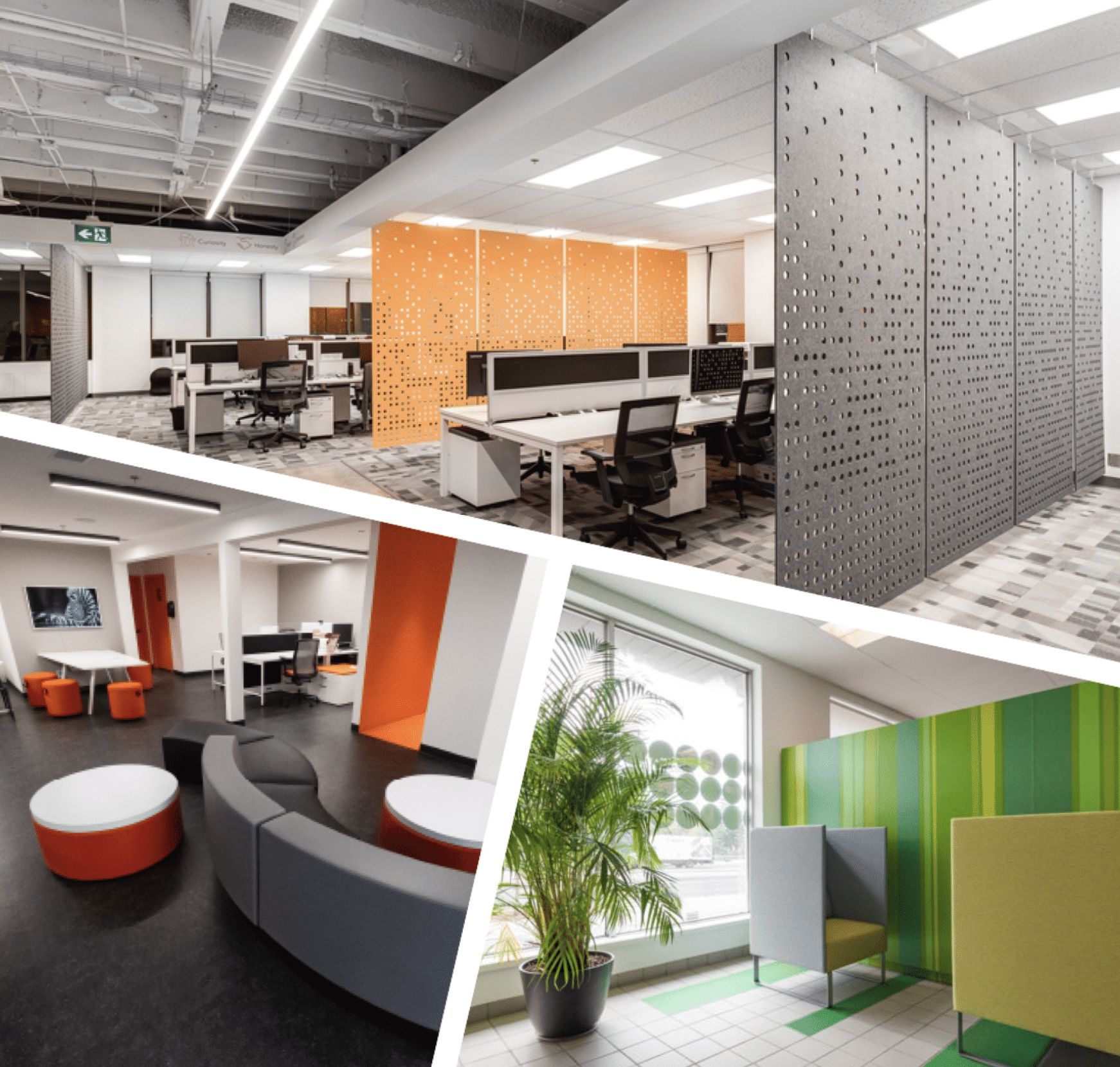Balance Open Office Concepts with Flexibility
Like most things in the world, office design trends change with time. Beyond the design elements and styles, perhaps the biggest decision to make is around the pros and cons of the open office.
The predecessor of the open office — the “cubicle farm” — is dreaded by anyone who experienced it. There are jokes, comics, and movies based on the caged-in feeling that grew in workers who spent so many hours in them. Thankfully, tech companies like Facebook and Google were leaders in reinventing what office design could be.
Unfortunately for employers and employees, extremes can be unpopular with at least some team members. The advent of the open office brought more noise and distraction, even as it created opportunities for collaboration.
Office Zones
As office design continues to evolve, designers and companies are finding a better balance to manage the types of work they do and the personalities or needs of the people who do it. Setting up various zones allows for maximum flexibility and results in maximum productivity, not to mention some impressive designs to keep your team happy and your clients impressed.
There are some common zones to consider when planning your office layout, but the great thing about this approach is that you can define those that work best for your business.
To help you get started, here are the basics:
- Work Zones
Desks or workstations where individuals or related groups get their work done
- Work Zones
Desks or workstations where individuals or related groups get their work done
When you’re deciding what zones you need and how to arrange them, it’s important to think about the individual jobs and what they need. For example, people who do more heads-down focused work might need more quiet, so they need to be farther away from high-traffic areas and groups like sales or support who spend their time on the phone.
Flexibility for Any Office
All this talk of zones may make you think you need lots of space to achieve this optimal office environment. While it does have huge potential in huge offices, it’s also an ideal way to maximize a smaller space.
Any office can move away from traditional cubicles and dividers and get creative, maybe even saving some money along the way. Height-adjustable desks are becoming more and more competitively priced, and you can move them around more easily so that you can change things up as you grow and evolve. Most such desks (whether height-adjustable or fixed height) have the option of attaching divider panels to help add some privacy and sound absorption.
If you don’t have room to physically separate the quiet jobs from the more interactive jobs, there are many affordable options to divide up the spaces. Acoustic panels are available in a variety of colours and styles. Because the material itself helps with sound, you can have cut-out designs (say circles or chevrons), so it feels more open and adds to the aesthetic. They’re also lightweight and easy to move around if you need to reconfigure them in the future.
Don’t have space to designate a quiet zone? No problem. A couple of well-designed privacy chairs are constructed in sound-absorbing fabric with high sides and sometimes even a roof. Face two of these off toward each other, and you’re instantly in a quiet zone in a pretty small footprint.
Meetings and collaboration aren’t just about sitting in a boardroom. While that certainly has its place, you can also create a grouping of sofas, chairs, and coffee tables that foster creativity and can double as a social space.
Speaking of social spaces, the Facebooks and Googles of the world have become known for the unique perks they offer, whether it’s nap rooms or foosball tables. You don’t have to go that big, but having a great lunch room (which can double up for training sessions) allows your employees to step out of the work zone to clear their heads, get a social fix, and fuel up for greater productivity when they get back in their own work zone.
If you have a massive office space, you have many options for setting up your office zones for your best results, but a well-thought-out office can do a lot with a little just as easily.
Need help figuring out the zones in your office design? Let’s talk.

